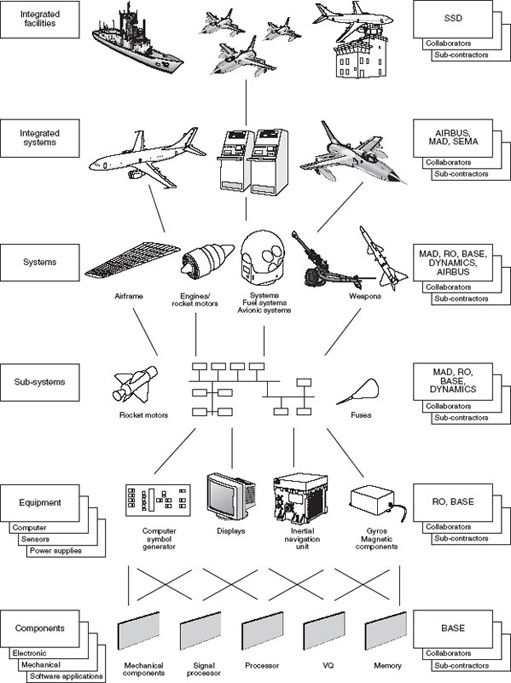3.4 Systems concepts: structure
As suggested earlier, the structure of a system is its functional or physical arrangement; the term that is often used in systems engineering is ‘architecture’. The architecture of a system can be deconstructed to reveal its constituent elements. I suggested in Section 1 that an existing knowledge base has an important bearing on the way in which a change problem is perceived. The way that this is conceived by one armaments system integrator is illustrated in Figure 30. Process is connected with the dynamic behaviour of the system. Structure is those processes that change relatively slowly; dynamic behaviour changes relatively quickly.

The ISO/IEC 15288 standard adopts a three-layer approach to the decomposition of a system of interest. The top layer is the system of interest itself; this is composed of many systems which, in turn, are made up of many system elements. A system element is ‘… a discrete part of a system that can be implemented to fulfil specified requirements.’ (ISO/IEC 15288, p. 4).
Both the T837 and the ISO/IEC 15288 definitions of systems and system structure can be stated formally (Kaposi and Myers, 1994, p. 15). A system S can be represented as
S = (E, RE)
where
E = {e1, e2,... en} is a set of elements
RE = {rE1, rE2,... rEm} is a set of relationships on the elements
The arrangement of the elements in a system is usually represented by simple hierarchical diagrams which simply imply a ‘contains’ or ‘includes’ relationship. In fact, the structure of a system can equally well be considered in terms of its dynamic behaviour.
